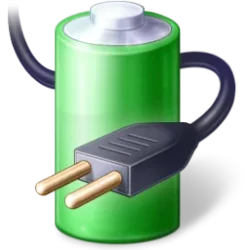@hdmi Can you describe your implementation of CDP?
It's confidential due to company policy and the kind of work I do, but for my personal, non-work related stuff I don't actually use CDP.
My understanding is that CDP is based on continuous incrementals. If malware hits a MS Word file for example, how does it NOT propagate to the corresponding incremental? How does the malware NOT propagate to the rest of the backup?
Near-CDP is very often based on incremental snapshots in such a way that they are created in more rapid succession, via timers (as opposed to scheduled scripts that will be run comparatively less frequently, i.e. as part of a scheduled, or "traditional" so-to-speak, snapshot-based backup mechanism), but it certainly isn't
always based on snapshots. Wereas with the strictest definition of
True CDP, every
block-level change is recorded in a changelog allowing for precise recovery to (almost) any specific point in time. It means that the RPO (recovery point objective) is close to zero; in practice typically it will be seconds, i.e., it is by definition
very finely granular. True CDP can also be snapshot-based or not. A less strict definition of True CDP still records every change (file-level changes and application-level changes), but doesn't also include any
block-level changes.
Once they have been recorded, the recorded changes will have securely been stored in a secondary information repository, or storage space. Regardless of whether you use CDP, any copy that is not stored in a separate, secure, storage space is not an actual backup copy. This is by definition of the term "data backup" alone. So, explicit care must be taken that the separate storage space used for storing backup data will be secure, and will remain so. True CDP may be the gold standard, which, as a matter of (non-alternative) fact, it is, BUT... cyber resilience and CDP go hand in hand, as does resilience against other risks besides falling victim to malware/ransomware/etc.. (I have watched entire RAID arrays go up in a cloud of thin smoke with just a single spark.)
Malware is already an increased concern for conventional types of backup but instantaneous types of backup can make the malware issue even worse.
Much to the contrary, CDP lets you go back in time to only moments before disaster struck. It is, and always has been, one of the key advantages of CDP.
------------
Frankly, if the damage is so great that I can't even do such a radical repair such as a repair install, then chances are that I won't trust ANY repair anymore and will buy a new boot drive (or even a new computer)
I have never been anywhere near such a calamity though, thank goodness, I'm just contemplating the what ifs of the possibly terrible inconveniences

No I mean, to be able to do a Windows repair via an in-place upgrade, first you have to be able to boot into Windows.
Repair Install Windows 11 with an In-place Upgrade Tutorial
But if you need to repair Windows, then there's always a small chance that the repair thingy will also be borked, as it's a part of Windows of course. lol That's why you could consider to create a system image every once in a while to avoid having to do a clean install of Windows plus drivers plus updates plus software/apps plus redo all the various settings you had on it when your Windows died.
Just be sure to backup your user files separately and regularly IMO, and also be aware that you don't normally need to create yet another image specifically for that, as there exist plenty of other options to achieve it. Personally, I, like to use FastCopy in diff mode with file verification a lot. Its ability to save file hash codes to the filelog also lets me re-validate the copied files every so often. So, it's usually just a matter of always making sure to physically unplug one external storage device and move that one to a safe location, away from the computer, always before plugging the other external storage device in. By alternating between the two external storage devices in this manner, the wear and tear on them will also be more evenly balanced between them.





